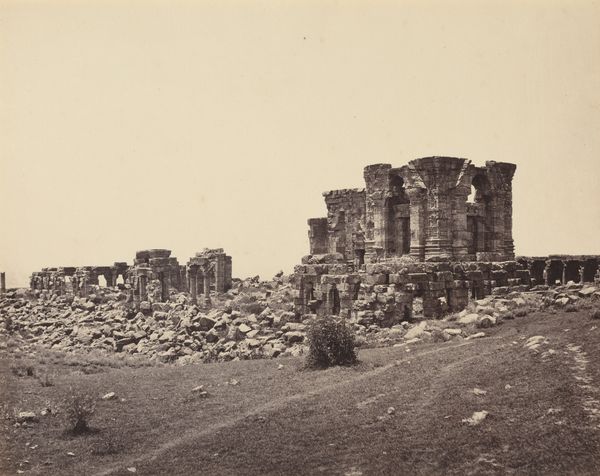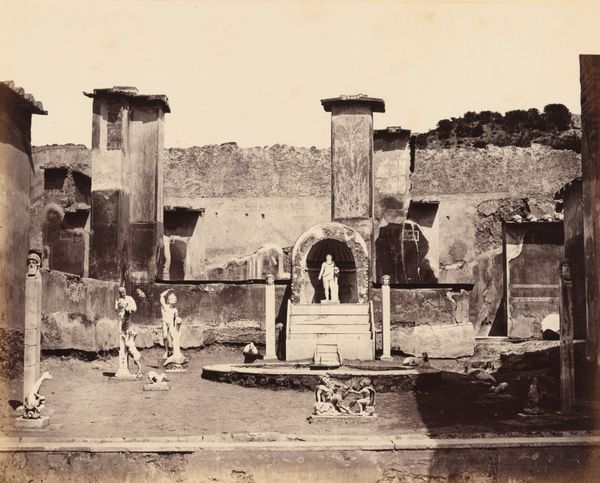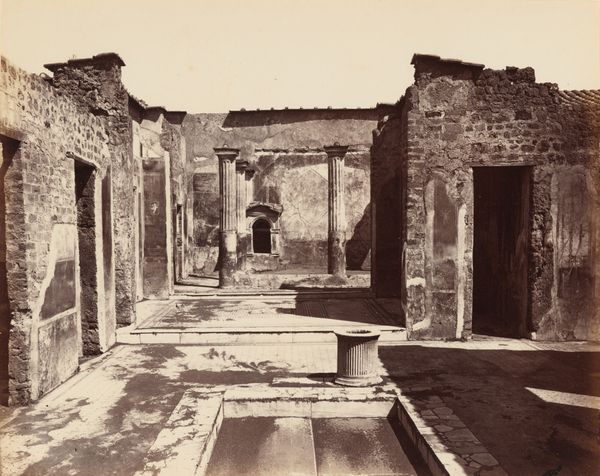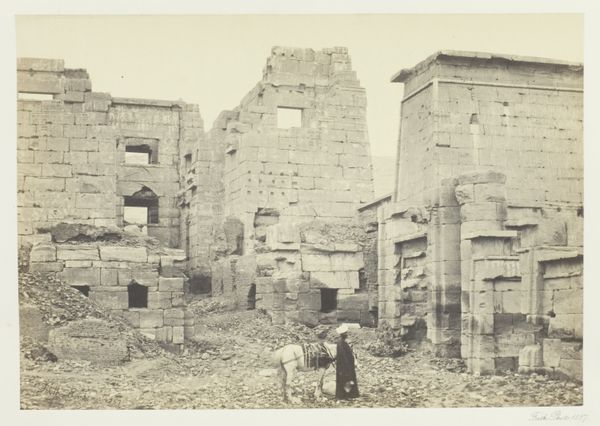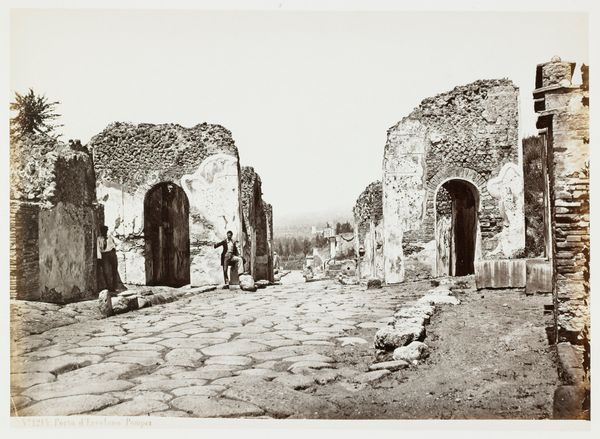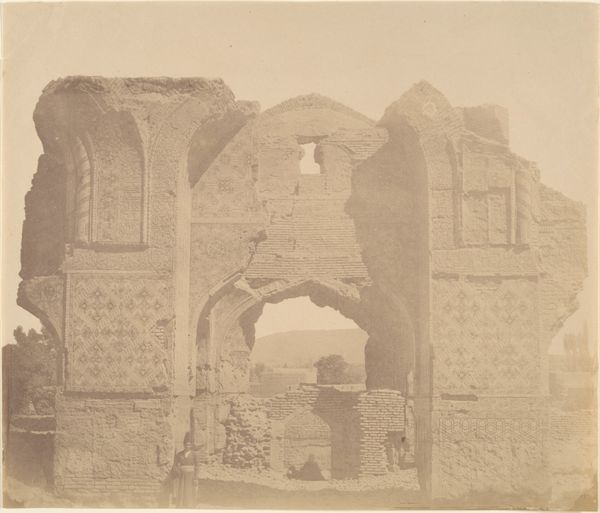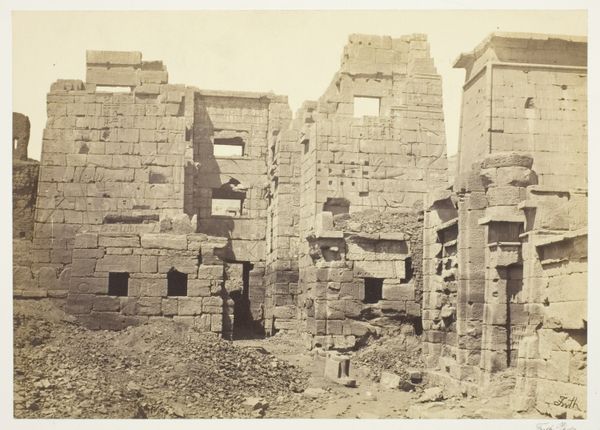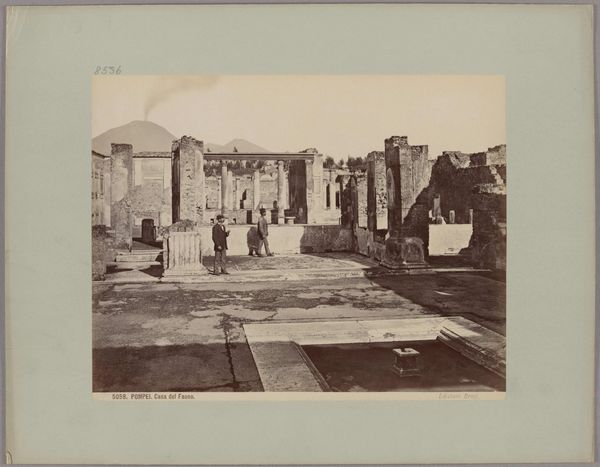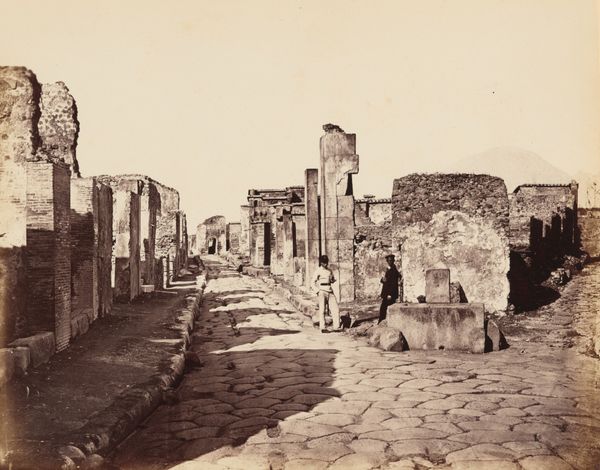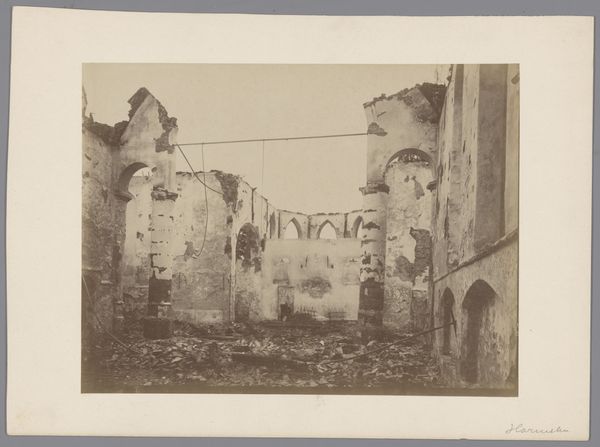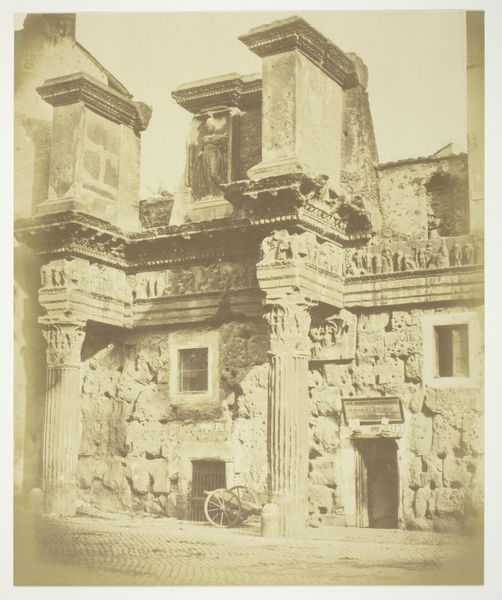
photography, architecture
#
landscape
#
photography
#
ancient-mediterranean
#
orientalism
#
islamic-art
#
architecture
Dimensions: Image: 36.8 x 45 cm (14 1/2 x 17 11/16 in.) Mount: 53.4 x 73 cm (21 x 28 3/4 in.)
Copyright: Public Domain
Curator: This stunning sepia photograph, entitled "Street in Fatehpur Sikri, India", was captured between 1858 and 1862 by John Murray, and it resides here at the Metropolitan Museum of Art. Editor: It's immediately evocative. The image carries a profound sense of quietude. Despite the ruined architecture, there’s this incredible stillness and sense of history, even resilience, conveyed. Curator: Absolutely. Murray’s work, like so much of Orientalist photography, invites us to consider the relationship between the British gaze and its colonial subjects. We see Fatehpur Sikri, once a majestic city, presented here in partial ruin. Editor: The partial ruins raise a question: is the decline a matter of factual record, or a symbolic projection onto the colonized space? Consider also who benefits from an understanding that renders certain architectures as ‘historical.’ Curator: And the people are so small! There are these figures nestled within these vast architectural spaces that adds another layer of power dynamics at play here. There's a subtle but crucial dialogue about identity. Are they dwarfed by their own history, or coexisting? Editor: It does echo back to ongoing discussions regarding whose narratives dictate how locations and persons are understood. Think about gender and how its definition informs spaces such as domestic homes as either public or private locations of self-determination. Are the private and public, indigenous lives made visible, or strategically kept hidden? Curator: That's a compelling point. This image, far from being a straightforward depiction of a place, is really enmeshed in layers of social, political, and cultural complexities that need to be critically examined. Editor: Indeed. Looking at this artwork gives so much to reflect on about the intersection of art, politics, and the long shadow of colonialism.
Comments
No comments
Be the first to comment and join the conversation on the ultimate creative platform.

